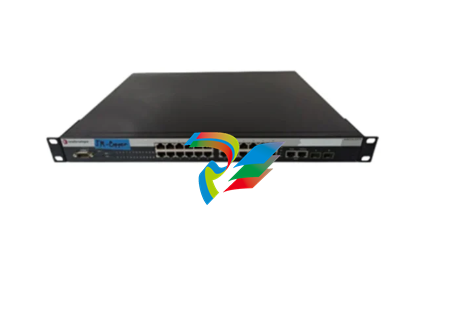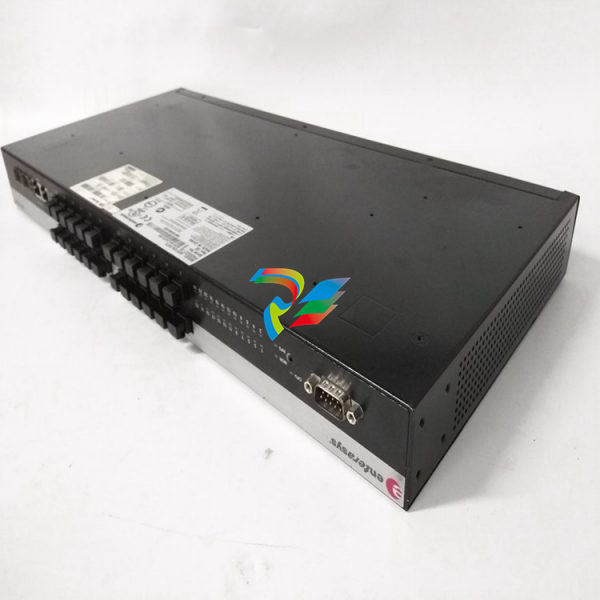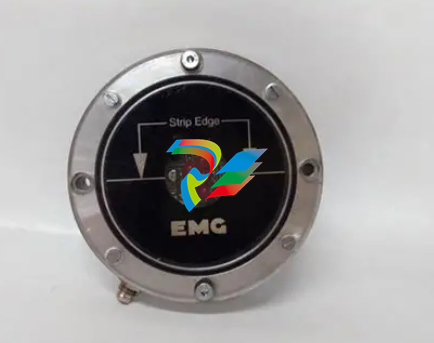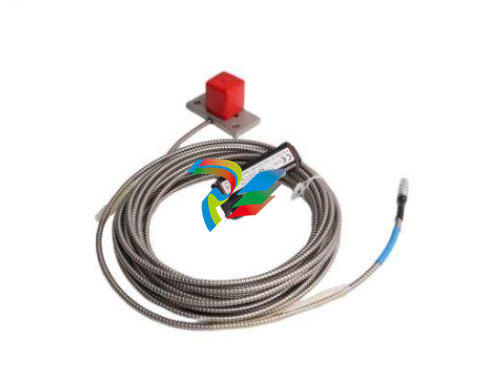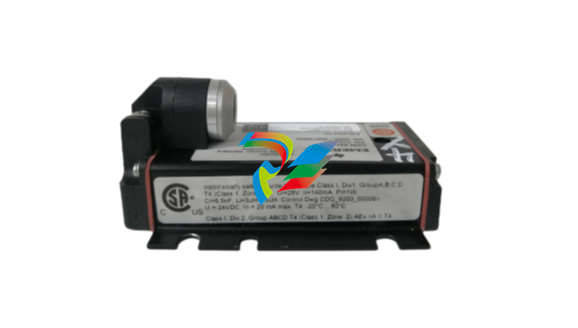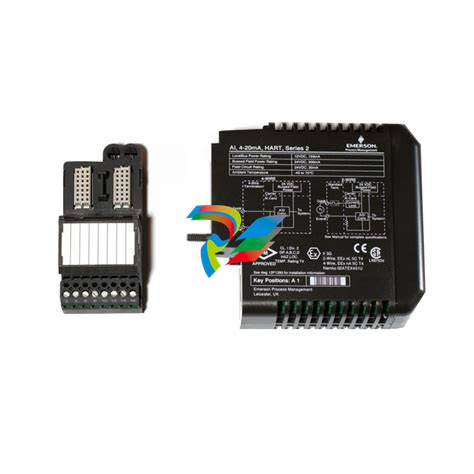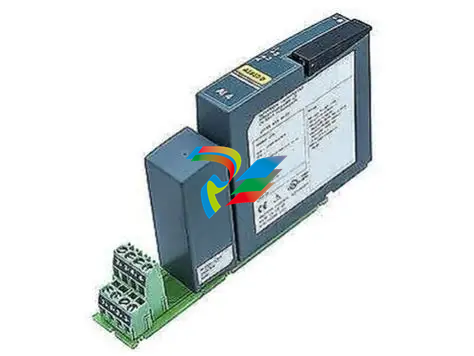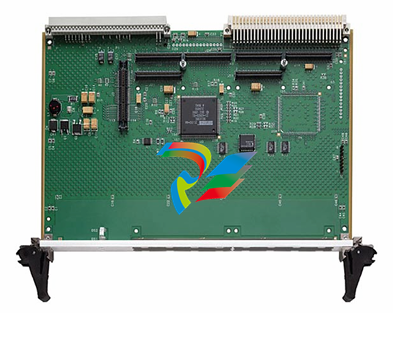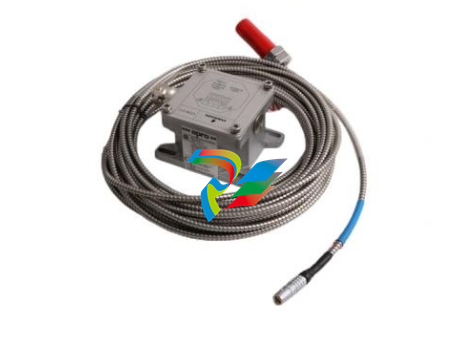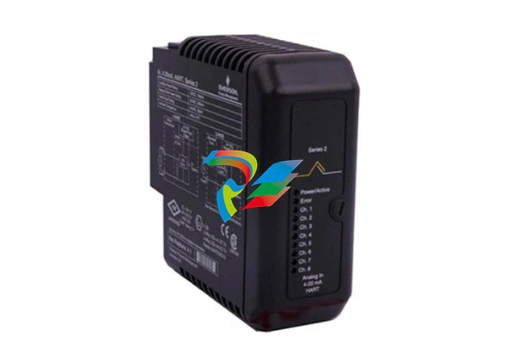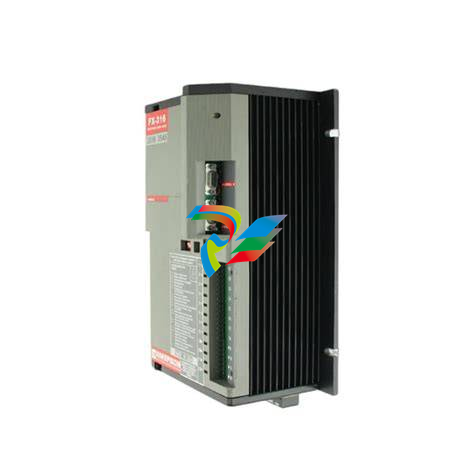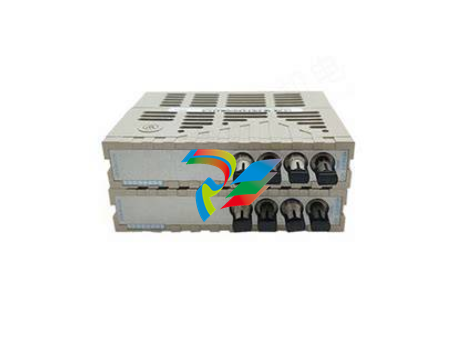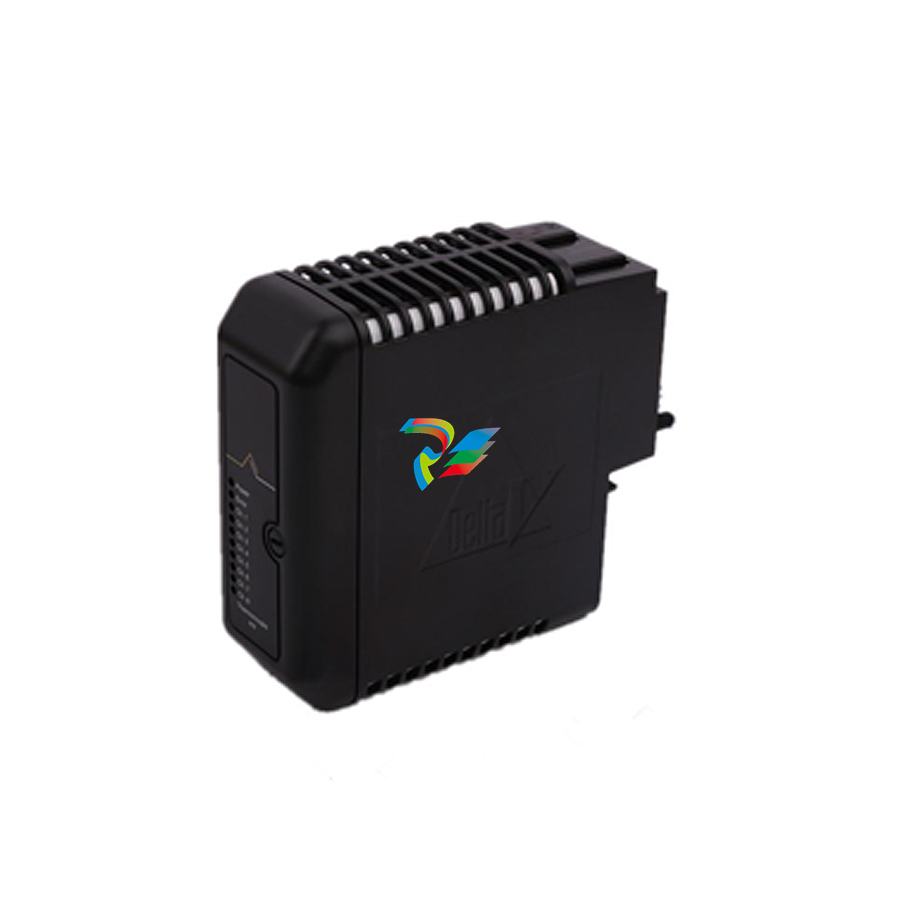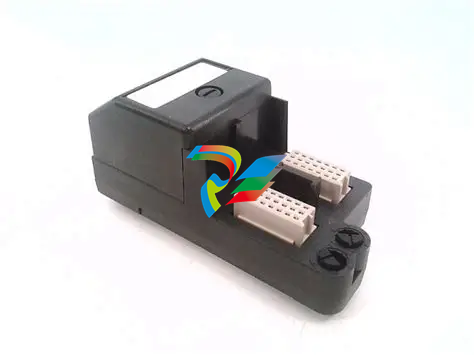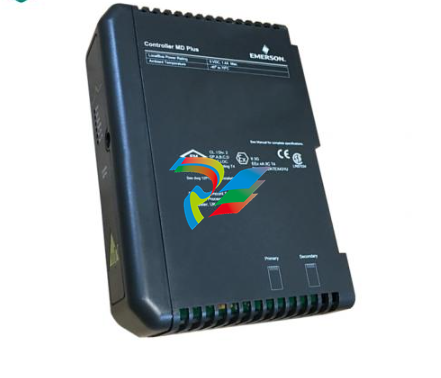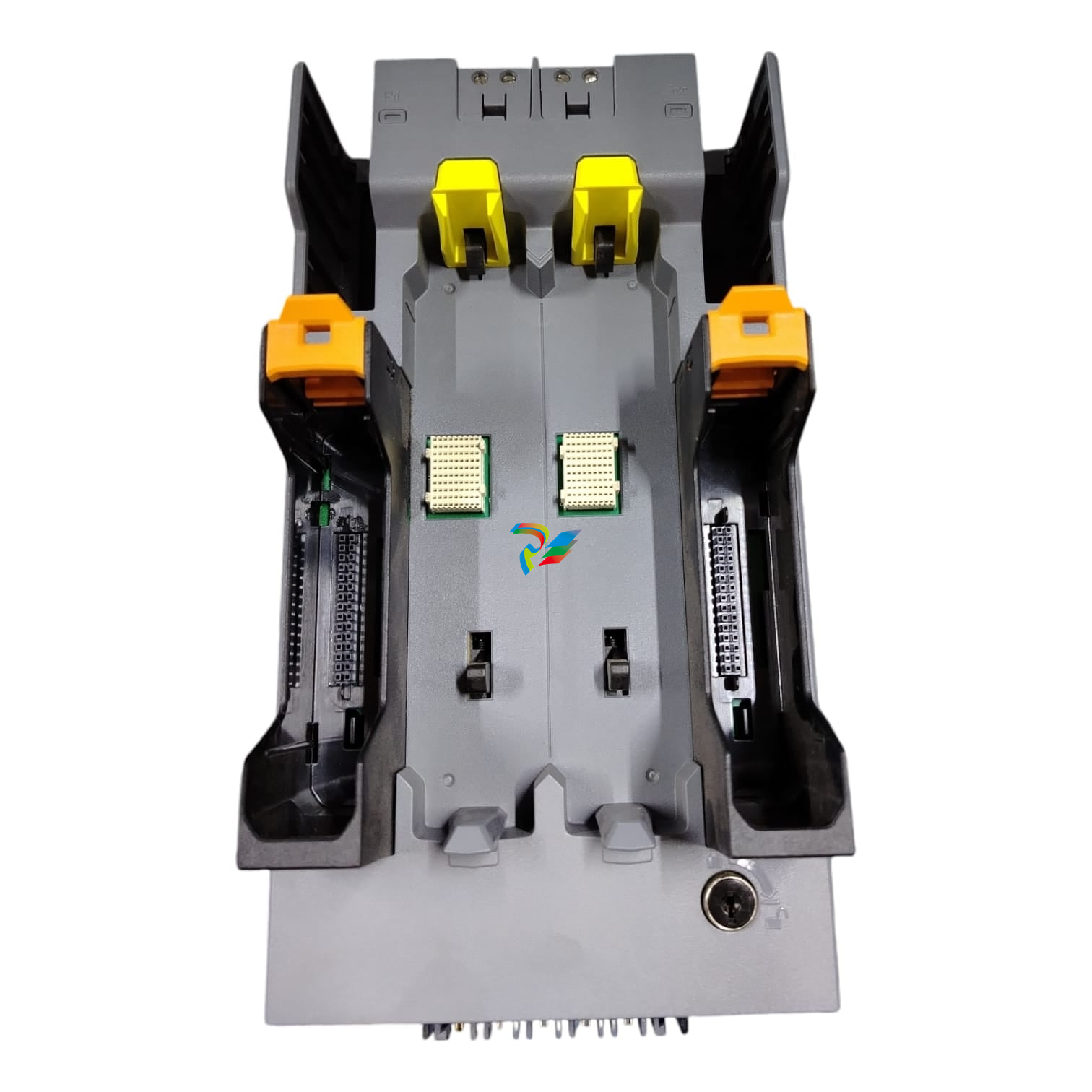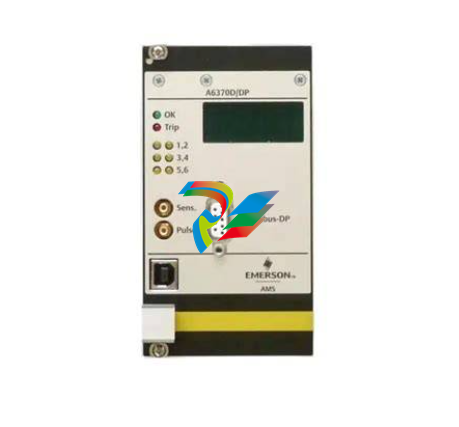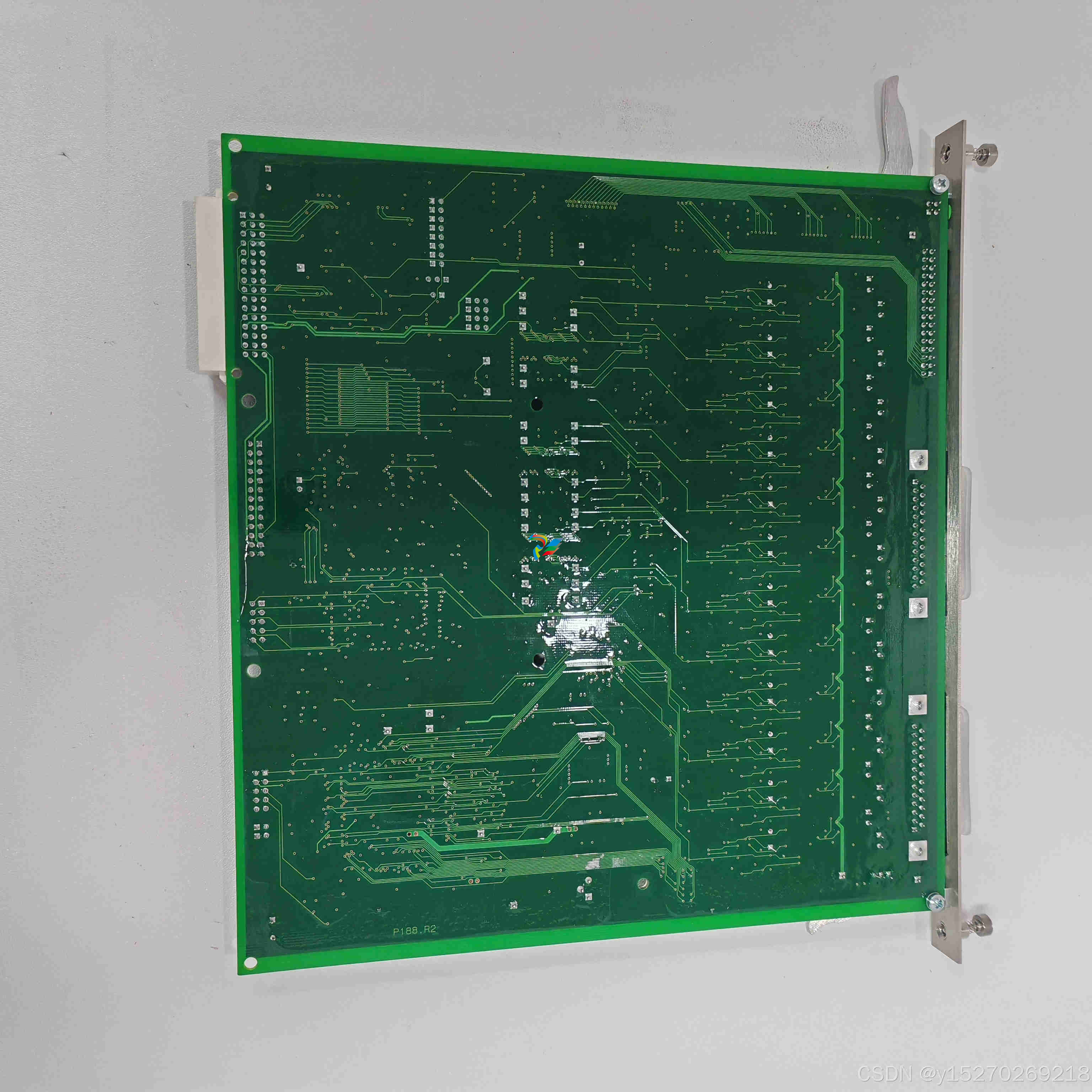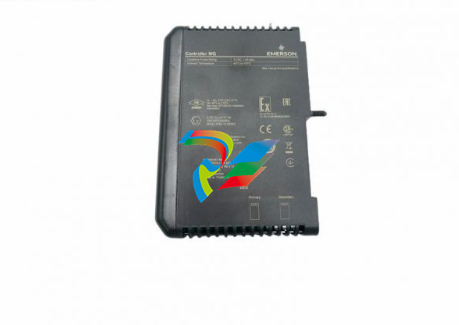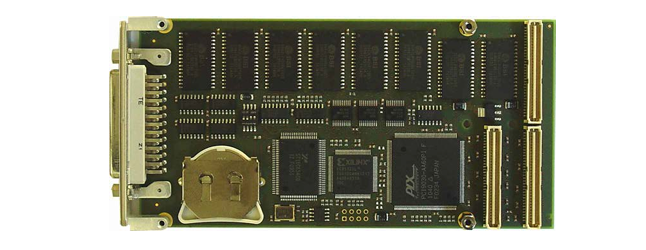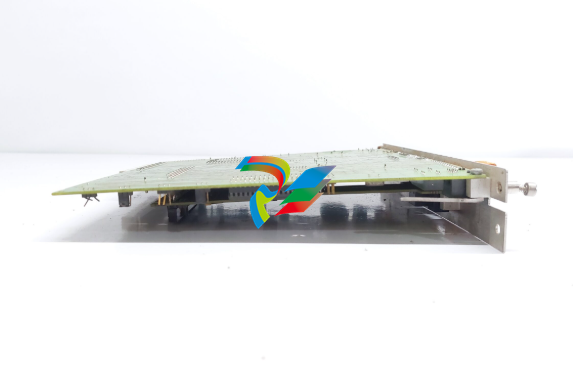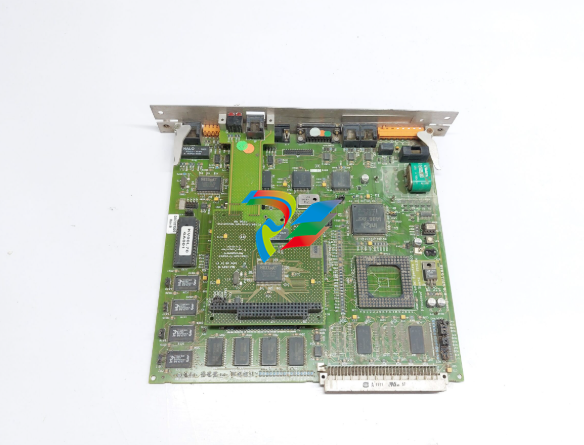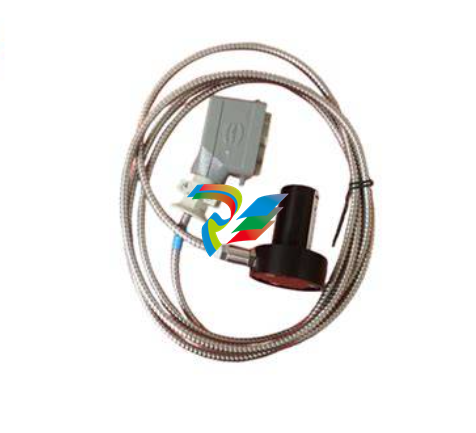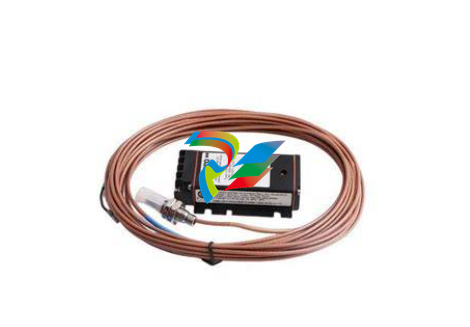
ABBDevice Management PROFIBUS DP/FMS Redundancy Link Module, RLM01
Section 1 Features/ Application
RLM 01 converts one simple, non-redundant Profibus line into two reciprocally redundant lines A/B. The module works bidirectionally, which means that all three interfaces can receive and transmit data
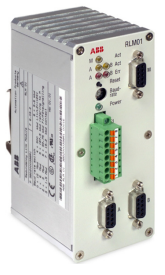
• Conversion: Line M <=> Lines A/B
• Use on PROFIBUS DP/FMS lines
• Automatic line selection
• Transmission rate 9.6 kBit/s .... 12 MBit/s
• Monitoring of communication
• Repeater functionality
• Redundant power supply
• Status and error display
• Monitoring of the power supply
• Potential-free alarm contact
• Simple assembly on DIN mounting rail
You can position the module directly after a master, before a bus segment with several slaves or before an individual slave. PROFIBUS stations with redundant couplers [K] can be directly connected to the PROFIBUS set redundant by RLM 01. Stations with only one interface can be optionally assigned to the A or B line. Each RLM 01 PROFIBUS interface can serve up to 31 PROFIBUS stations. Using repeaters [R] and media converters [O/E] makes it possible to increase the length of the PROFIBUS lines and the number of stations.
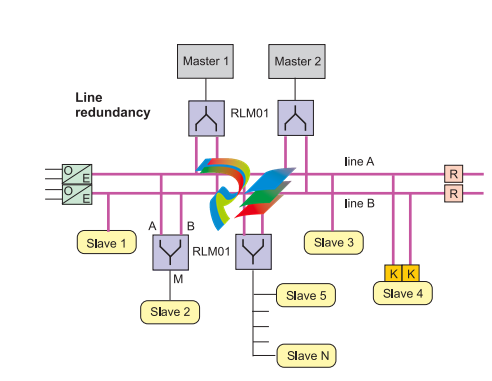
Figure 1. Application example
RLM01 does not support master redundancy where one master only runs line A and the other one only line B. The bus communication is asynchronous, even if both masters balance their program modules against each other on the applicational level. A Melody central unit CMC 60/70 offers clock sy
Network devices like repeater, FOC coupler, DP/PA converter as well as RLM01 cause a N x bit time delay of data telegrams. The delay time (see technical data) is device specific and depends upon the selected baud rate. It must be taken into consideration for the master bus configuration.
Section 2 Description of functions
The three RS 485 interfaces of the module support all transmission rates specified in DIN 19245 for the PROFIBUS from 9.6 kBit/s to 12 MBit/s. The module has repeater functionality, i.e., it regenerates the signal shape and the amplitude of received data. RLM 01 monitors all three lines A, B and M for activity and error states. Detected errors are signalled by lit diodes on the front panel. The potentialfree alarm contact activated in parallel to this can be polled for diagnostic purposes by the process control system PCS or by a programmable logic control PLC. The three serial RS 485 interfaces are potential-free relative to each other and to the power supply. This is a functional electrical isolation. The first data coming in over line A or line B with a correct telegram start are routed to terminal M. With simultaneity, either line A or line B is selected at random. Testing and selection is always based on the first character. In the case of a telegram start with error on A, the control logic switches to the redundant line B. The same procedure applies vice-versa for line B. Data coming in over line M with a correct telegram start are routed in parallel to the two terminals A and B. The test for data is always based on the first character. In the case of a telegram start with error, the control logic does not output any data to A and B. Either a single or a redundant power supply with 24 VDC is possible. The distribution of load across L1+ and L2+ is based on the level of the voltages applied. If a voltage source fails, the switch to the redundant supply source is made without interruption. A monitoring logic circuit tests whether both voltages are present.
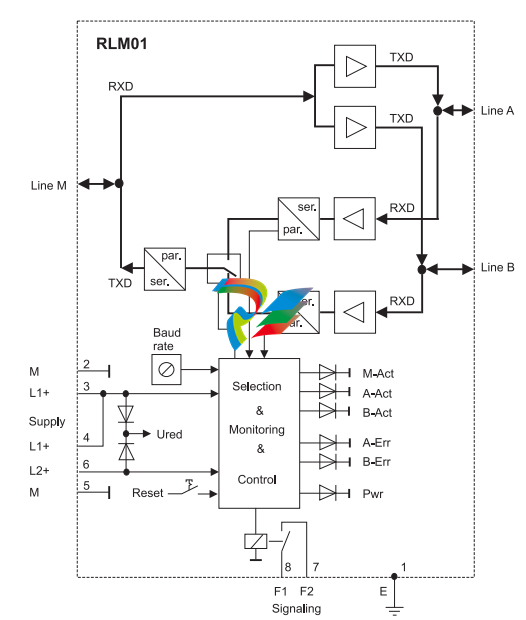
Section 3 Commissioning
Safety information
To supply RLM 01, use only a safety-low voltage. This requirement also applies to the alarm contact supply. In accordance with the UL/CSA requirements an external protection (e.g. fuse) is prescribed. The fuse rating can amounted to 1.6A to 10A (characteristic: medium slow-acting or slow-acting). Protection of groups of several devices with a common fuse is admissible (several RLM 01 or RLM 01 together with other devices). When selecting a mounting location, make certain that the limit values for ambient conditions specified in the technical data are observed and the module can discharge heat without any obstruction. Do not connect any bus lines that are laid partially or entirely outside buildings. Voltage overload, for example resulting from lightning strikes, may destroy the module. For protection against cases such as these, use optical fibre cable and appropriate medium converters (electrical <==> optical) as high-quality electrical isolation. In accordance with the PROFIBUS installation guideline the shielding of the bus cables are preferably connected at the start and at the end with earth potential. Place the module on a low-resistance and low-inductance earthed DIN mounting rail. Grounding measures by way of the E terminal (1) on the terminal strip are then not required.
Front panel elements
Three Sub-D connectors A, B and M are located on the front panel of the RLM 01 for connection of the PROFIBUS cable. The 8-pin male multi-pin connector with the associated terminal strip is used to connect the alarm and power supply wires. There are also LEDs for activity/error display, a rotary switch for setting the transmission rate and a reset button (activate transmission rate)
